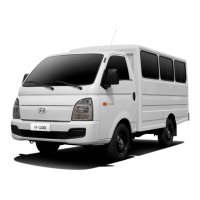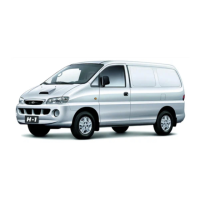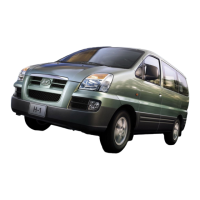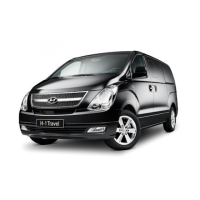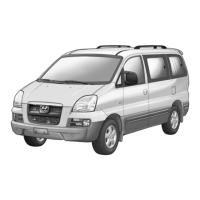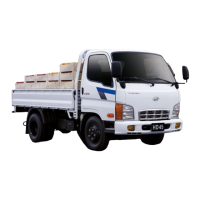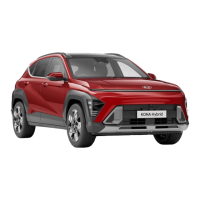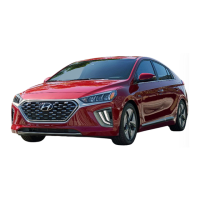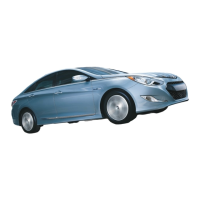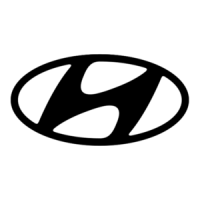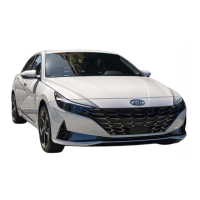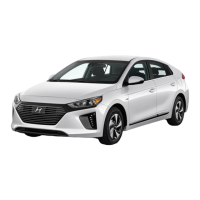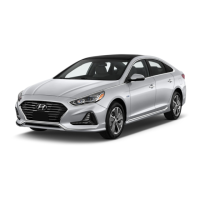2
DRIVING YOUR HYUNDAI
11
turn the front wheels away from the
curb to help keep the car from roll-
ing.
If there is no curb or if it is required
by other conditions to keep the car
from rolling, block the wheels.
o Under some conditions your park-
ing brake can freeze in the engaged
position. This is most likely to hap-
pen when there is an accumulation
of snow or ice around or near the
rear brakes or if the brakes are wet.
If there is a risk that the parking
brake may freeze, apply it only tem-
porarily while you put the gear se-
lector lever in first or reverse gear
and block the rear wheels so the car
cannot roll. Then release the park-
ing brake.
o Do not hold the vehicle on the up-
grade with the accelerator pedal.
This can cause the transmission to
overheat. Always use the brake
pedal or parking brake.
o Don't "ride" the brake or clutch pedal.
This can increase fuel consumption
and also increase wear on these
components. In addition, driving with
your foot resting on the brake pedal
may cause the brakes to overheat,
which reduces their effectiveness
and may lead to more serious con-
sequences.
o Take care of your tires. Keep them
inflated to the recommended pres-
sure. Incorrect inflation, either too
much or too little, results in unnec-
essary tire wear. Check the tire pres-
sures at least once a month.
o Be sure that the wheels are aligned
correctly. Improper alignment can
result from hitting curbs or driving
too fast over irregular surfaces. Poor
alignment causes faster tire wear
and may also result in other prob-
lems as well as greater fuel con-
sumption.
o Keep your car in good condition. For
better fuel economy and reduced
maintenance costs, maintain your
car in accordance with the mainte-
nance schedule in Section 5. If you
drive your car in severe conditions,
DRIVING FOR ECONOMY
C140A01A-GAT
You can save fuel and get more kilo-
meters from your car if you follow
these suggestions:
o Drive smoothly. Accelerate at a
moderate rate. Don't make "jack-
rabbit" starts or full-throttle shifts
and maintain a steady cruising
speed. Don't race between stop-
lights. Try to adjust your speed to
that of the other traffic so you don't
have to change speeds unneces-
sarily. Avoid heavy traffic whenever
possible.
Always maintain a safe distance
from other vehicles so you can avoid
unnecessary braking. This also re-
duces brake wear.
o Drive at a moderate speed. The
faster you drive, the more fuel your
car uses. Driving at a moderate
speed, especially on the highway, is
one of the most effective ways to
reduce fuel consumption.
